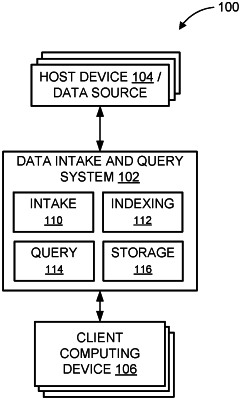| CPC G06F 16/213 (2019.01) [G06F 8/658 (2018.02); G06F 11/327 (2013.01); G06F 11/3466 (2013.01); G06F 16/219 (2019.01); G06F 16/24532 (2019.01); G06F 16/26 (2019.01)] | 17 Claims |

|
1. A computer-implemented method, comprising:
selecting, from a plurality of content packs in a centralized content management system, a content pack to update in a data intake and query system, the content pack comprising a plurality of utility objects, wherein the plurality of utility objects comprises a service template object;
determining that the content pack does not comply with a current version of the data intake and query system;
updating, responsive to the content pack not complying with the current version of the data intake and query system, a version of a software library in the data intake and query system, wherein the software library is in the data intake and query system;
for each utility object of at least a subset of the plurality of utility objects:
determining whether the utility object already exists in the data intake and query system, and
loading the utility object to the data intake and query system when the utility object does not exist to obtain an updated utility object;
generating, from the service template object in the plurality of utility objects of the content pack, a service object comprising a plurality of key performance indicators, wherein the service object is linked to the service template object;
monitoring, by the data intake and query system, an endpoint of an endpoint type using the updated utility object and the plurality of key performance indicators in the service object;
receiving an update to the service template object; and
updating the service object linked to the service template object responsive to the received update.
|